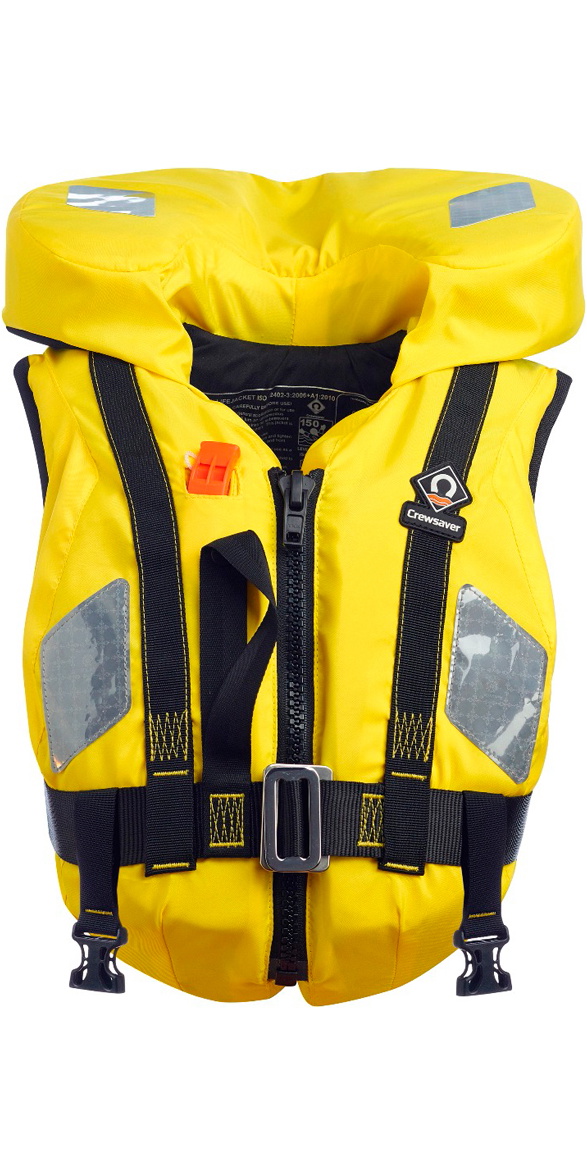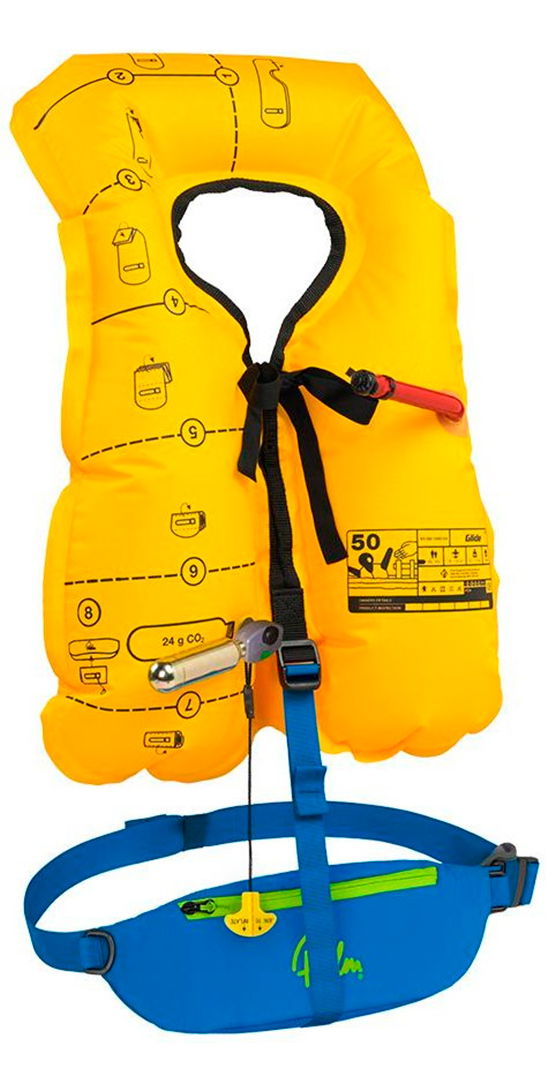Stand Up Paddleboarding is an incredible way to enjoy and explore the water, but as with all water sports, the right preparation and kit can have a huge impact on the enjoyment levels. Without a doubt, one of the most important points of preparation to consider is your safety, and that’s where a personal floatation device comes in.
A personal floatation device, or what’s sometimes more commonly referred to as a PFD, is a piece of life saving equipment designed to assist in keeping a person afloat while in the water. There are many different types, all of which serve a different purpose.
If you’re new to Stand Up Paddleboarding it’s worth taking the time to familiarise yourself with the different types so you know which one would be best suited to you.
LIFE JACKET
A life jacket is designed to keep the wearers face out of the water by flipping them over, from face down to face up, keeping their airway clear from the water, even in the event that they are unconscious, to prevent drowning. These are often quite bulky in their design, making them rather restrictive when it comes to certain water sports and not very suitable for SUP. Depending on which one’s you’re looking at, they can often be self-activating as soon as you come into contact with water.

BUOYANCY AID
A buoyancy aid is just that. It’s designed to aid the wearer in keeping them afloat by providing extra buoyancy. It won’t flip you over or keep your face out of the water if you are unconscious, but these are generally less bulky and in turn less restrictive than wearing a traditional life jacket, making them a far more popular choice for water sports such as Paddleboarding.

INFLATABLE WAIST PFD
An inflatable PFD is certainly the most compact, and least restrictive, out of the three. These are designed to inflate (either manually or automatically) to become either a life jacket, buoyancy aid or just a simple form of float. While this sounds like a great option, it is worth noting that it doesn’t offer the wearer the immediate support compared to the other two, as you’ll need to activate it when you get into difficulty. Also, once activated the deployment cartridge has to be replaced, which can be quite expensive!
These will need to be serviced regularly to ensure they are still fit for purpose before heading out on the water, as it’s the last thing you’d want to fail when you need it! 
With so many options of PFD out there on the market, knowing what to look out for and how to choose the best one for you can be difficult, so here’s a breakdown of what you should ask yourself before you buy one:
- What type of paddling are you going to be doing?
A great question to help you consider what extra features you might want from your PFD. Yes, all of them will keep you afloat in one way of another but depending on where you are going or the type of paddleboarding you’re going to be doing it might affect what extra features you’d like your PFD to have. If you’re going on longer paddles, then having room for a hydration bladder in the back might be exactly what you need or if you’re planning on doing lots of racing you might find you’d benefit more from a slim lined design.
- Are you confident in your abilities (both with swimming and on the board)?
If the answer to either of these if no, then you may find a traditional jacket style Buoyancy Aid a better choice for you, with no need to do anything other than wear it for it to work if needed. If you’re confident in both your abilities and you just want something there in case of an emergency on a multi-day tour for example, then you might want to look at the space saving inflatable waist PFDs.
- Do you find it comfortable to wear?
If you don’t find it comfortable then let’s be honest, it’s highly unlikely that you’re actually going to wear it, so ensuring it’s comfy is key! Does it fit right? Does it restrict your movement in any way or rub? Is it easy for you to get on and off? Does it restrict your ability to get back onto your board? With there being so many different designs to PFDs it’s always worth try on a few and seeing what it better suited to your body shape and size.
- Is it fit for purpose?
Whatever PFD you decide to purchase, make sure it carries an ISO 12402 certification. This will be different around the world, and you also want to ensure that it’s the correct buoyancy (Newtons) for your body weight.
50N: Foam buoyancy aids are rated 50N and are only suitable for competent swimmers and should be used in sheltered water where help is close at hand. 50N life jackets only provide support to conscious people who can help themselves.
100N: Life jackets rated 100N are suitable for swimmers and non-swimmers in inshore & coastal waters. They give a reasonable assurance of safety from drowning in relatively calm waters. This particular rating does not guarantee an unconscious user to turn on their back and should not be expected to protect the airway in rough waters.
Anything higher than 100N may be too bulky for paddleboarding.
While some would argue that your primary form of floatation support is your board (which you do need to be tethered to with the correct type of leash for the water and environment you’re paddling in – for guidance on choosing the correct leash, click here. We’d always recommend wearing a PFD as your secondary, as you never know what could happen, especially in the event you were somehow detached from your board.
Now we might not make our own PFDs, but we can point you in the direction of some trusted and reputable companies that do! Palm Equipment and Rooster Sailing being two of them. Popular with our Tribe Riders and both with years of experience making and improving their ranges of PFDs for a wide range of different water sports.
If you’ve enjoyed reading this blog, then you can check out more of our safety advice here and don’t forget you can also follow us across our social media channels where you’ll find lots more information and advice on our products and all things paddleboarding!




